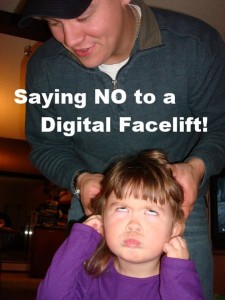NOTE: This post can also be read here at the book’s wiki, although that may be an edited version. Reflections from my classmates can be found at Nousion Readings.
The following are my Rich Reflections of Doug Belshaw’s book, The Essential Elements of Digital Literacies for ED F654.
Contents
Chapter 6 – Curiosity created the LOLcat
In this chapter Belshaw explores memes and how they are comprised of many elements of digital literacy. I found this interesting when LOLcat was introduced in a previous chapter. I hadn’t really thought much about memes, other than their reflection of our culture.
The idea that they are a remix is intriguing. In fact, remixing in general is interesting because as previously presented, there is very little (or no) original thought–it’s all a remix. That said, I think you create something original through the remix. Belshaw says, “The notion of an ‘original creative act’ is an interesting one–especially when we consider that in this case the ‘original work’ was actually it. It turtles all the way down.” I don’t understand the turtles expression, but perhaps that is cultural.
By unpacking memes, Belshaw illustrated how many of his essential elements of digital literacy were involved. This chapter makes me want to try my own hand at creating a meme. Patricia Bruder shares some interesting ideas for classroom use of memes at Ermahgerd– Memes in the Classroom?
I created this meme.
Chapter 7 – Remix: the heart of digital literacies
I’m glad that I actually caught on to the importance of remixing in the previous chapter. I appreciated Belshaw’s discussion of copyright and attribution. The difference between the analogue world and the digital realm is one I have struggled with in the past and the chapter helped me feel more confident about what is and isn’t okay to do.
I agree when Belshaw states, “The central difference between the digital and analogue worlds that I have experienced ruing my lifetime has to do with reverence. There appears to be a finality about analogue communication and media that does not translate to the digital world.”
I also found his conclusion exciting that learning driven by interest as being one of the best ways to learn in the digital environment, as well as that the work can be a remix instead of created by the individual from start to finish.
That said, I was puzzled by his ending bullet point, “Copyright and attribution are related by importantly different.” I don’t know what means, unless by is supposed to be but.
Although I’ve only read the synopsis, lawyer Lawrence Lessig has written some books on the topic of creative property in the digital world, one which is Remix: Making Art and Commerce Thrive in a Hybrid Economy. It appears that he explores the differences between analogue and digital culture, and posits that copyright laws stifle creativity. Recognizing the two are different seems to be in sync with Belshaw’s discussion.
Chapter 8 – Coding and the web
After getting the reader on board with web literacy vs. digital literacy, he discusses coding. I’ve heard of learning to ‘code’ many times but never bothered to discern what was being referenced–was it html, css, visual basic, mySql? Belshaw’s definition is, “Coding means the ability to read and write a machine language… Coding means the ability to think computationally.” This is non-specific, probably intentionally, because it seems that any of the languages I mentioned or a multitude of others would be ‘coding.’ I think I do understand what he means to think computationally.
Years ago I was a student in a course with our instructor where we learned some basic mySql. I discovered that although I usually came up with the correct result, my approach was often the long way round because my computational thinking was not well developed. Similarly, I struggled to learn Fortran back in 1975, translating flow charts into keypunch cards. Initially, I wondered why we need to know coding, but I concur that it can be helpful in the digital realm. Reading Dave McFarland’s blog post, The Real Reason Why Everyone Should Learn to Code, and Kyle Pearce’s article at DIY Genius, Why You Should Learn to Code (And How to actually Do It!) give further credence to learning to code. That said, interest in learning code as well as seeing the benefit of learning code (not everyone will find a use for it) are probably the greatest encouragements to learn coding.
I enjoyed reading Belshaw’s struggles to explain how he learns best. I also struggle with finding out which resources and learning activities work best for me. I also agree that the web has shown that a person doesn’t have to learn everything about a subject. I’d take that even further and say one probably can’t learn everything there is to know about a subject, because there is always more.
Belshaw says, “Just as one has to learn how to ‘do school’, so we need to learn how to learn online before we can actually do so.” I have found the transition difficult personally and am still trying to find my own keys to success in online classes.
Chapter 9 – Conclusion
Doug Belshaw’s final chapter was a brief summation of his book and refreshingly included a request for readers to comment, contribute, remix, practice their own digital literacy skills. Though my reflections may have sounded somewhat critical as I read his book, I found it very worthwhile reading. I plan to follow up on several of the links within the text to experiment with the ideas presented. I appreciate his highlighted quote, “This book is yours to read, but also to rip and remix.” I haven’t read that before in a book.
I also appreciated his beginning sentence, “In many ways, the conclusion to this book isn’t mine to write.” This ambiguous idea of digital literacy will certainly morph over time. He did very well identifying and discussing elements to examine more closely and explore.
